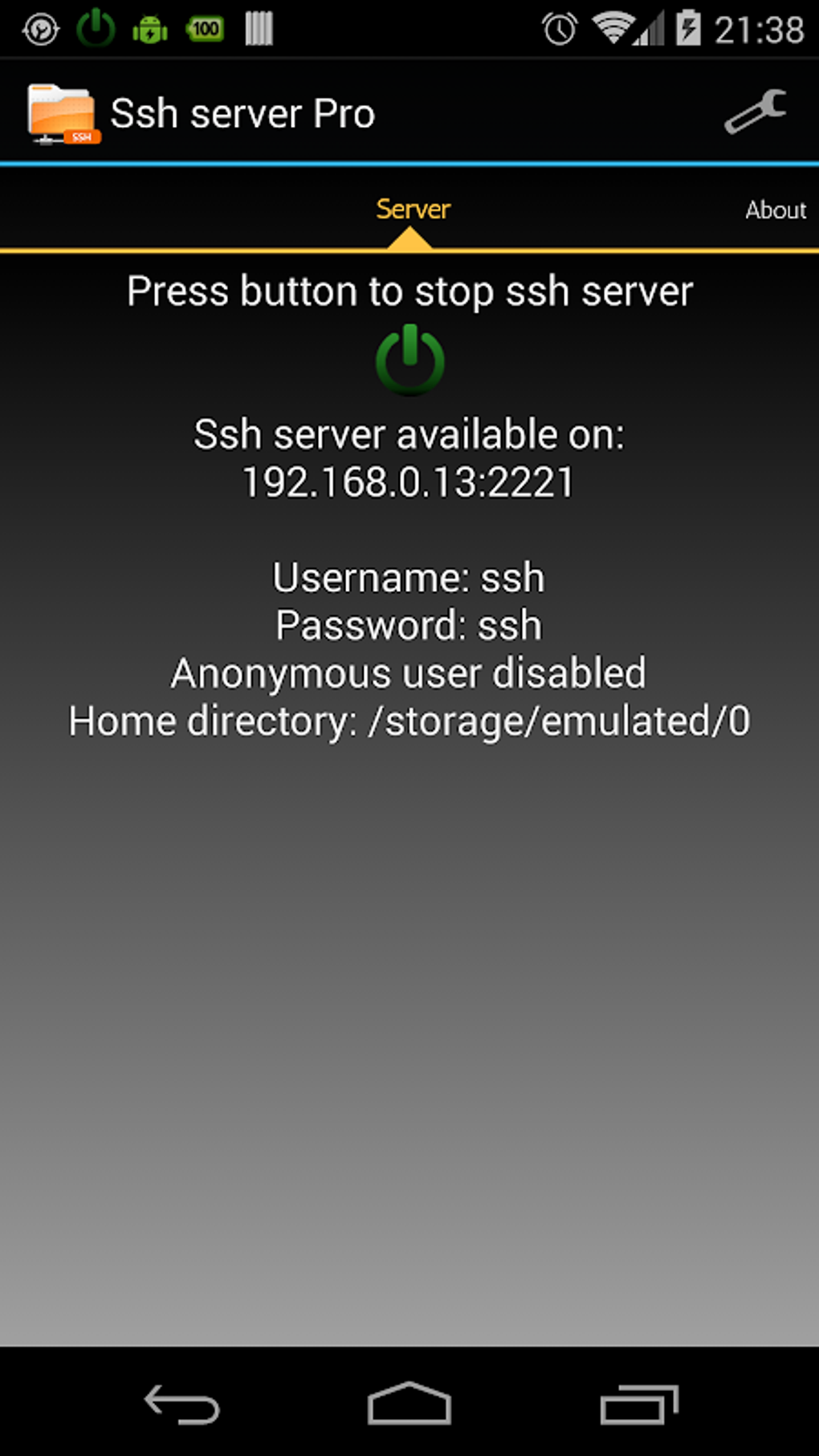Connecting remote IoT devices securely through P2P SSH on Android for free is a growing necessity in today's interconnected world. As technology advances, the demand for secure communication between devices continues to rise. With numerous threats lurking in cyberspace, ensuring that your IoT devices are protected has become paramount.
The Internet of Things (IoT) has revolutionized the way we interact with technology. However, as the number of connected devices increases, so does the risk of unauthorized access and cyberattacks. This article will provide a detailed guide on how to securely connect remote IoT devices using P2P SSH on Android without incurring any costs.
By the end of this article, you will have a thorough understanding of the tools, methods, and best practices for securing your IoT devices. Whether you're a beginner or an experienced user, this guide will cater to your needs and help you achieve a secure connection.
- Gypsy Rose Age A Deep Dive Into The Life And Legacy Of The Iconic Figure
- Hsoda 052 Exploring The Revolutionary Solution For Modern Challenges
Table of Contents
- Introduction to IoT P2P SSH
- Why Securely Connect Remote IoT Devices?
- Android as a Platform for IoT
- Tools for Free IoT P2P SSH
- Step-by-Step Guide to Secure Connection
- Benefits of Using SSH for IoT
- Potential Security Risks
- Best Practices for Secure Connections
- Common Mistakes to Avoid
- Future of Secure IoT Connections
Introduction to IoT P2P SSH
The concept of Peer-to-Peer (P2P) SSH for IoT devices is gaining traction due to its ability to provide secure and direct communication between devices. Unlike traditional client-server models, P2P SSH eliminates the need for intermediaries, reducing latency and enhancing security.
In a P2P SSH setup, devices can establish a secure connection without relying on a central server. This method is particularly beneficial for IoT devices that require real-time communication and minimal latency. Additionally, P2P SSH ensures that data transmitted between devices remains encrypted and protected from unauthorized access.
Key Features:
- Movierulz 2025 The Ultimate Guide To Streaming Movies Safely And Legally
- Ajay Thakore Wikipedia The Rising Star In The Entertainment World
- End-to-end encryption
- Direct communication between devices
- Reduced latency
- Improved security
Why Choose P2P SSH for IoT?
P2P SSH offers several advantages over other methods of securing IoT devices. It provides a robust framework for secure communication, ensuring that sensitive data remains protected. Additionally, P2P SSH is compatible with a wide range of devices, making it a versatile solution for IoT applications.
Why Securely Connect Remote IoT Devices?
As the number of IoT devices continues to grow, so does the importance of securing these devices. Remote IoT devices are often vulnerable to cyberattacks, making them an attractive target for malicious actors. By securely connecting remote IoT devices, you can protect your data and ensure the integrity of your network.
Secure connections also help prevent unauthorized access, data breaches, and other security threats. In today's digital landscape, ensuring the security of your IoT devices is not just a best practice but a necessity.
Statistics: According to a report by Gartner, the number of IoT devices is expected to reach 25 billion by 2030. With such a vast number of connected devices, the need for secure connections has never been more critical.
Android as a Platform for IoT
Android has emerged as a popular platform for IoT applications due to its flexibility, scalability, and ease of use. With its open-source nature, Android allows developers to create innovative solutions for IoT devices. Additionally, Android's compatibility with a wide range of hardware makes it an ideal choice for IoT applications.
Using Android for IoT applications offers several advantages, including:
- Wide range of compatible devices
- Open-source development environment
- Large community support
- Integration with Google services
By leveraging Android's capabilities, you can create secure and efficient IoT solutions that meet your needs.
Tools for Free IoT P2P SSH
Several tools are available for establishing secure P2P SSH connections on Android without incurring any costs. These tools provide a user-friendly interface and robust security features, making them ideal for securing IoT devices.
Top Tools for Free IoT P2P SSH
- Termux: A powerful terminal emulator for Android that allows you to run SSH commands directly on your device.
- SSHelper: A lightweight SSH server app that enables you to connect to your Android device securely.
- ConnectBot: A free SSH client for Android that supports P2P connections and offers advanced security features.
These tools are widely used in the IoT community and have received positive reviews for their reliability and ease of use.
Step-by-Step Guide to Secure Connection
Establishing a secure P2P SSH connection on Android involves several steps. Below is a comprehensive guide to help you set up a secure connection:
Step 1: Install Required Tools
Begin by installing the necessary tools on your Android device. For this guide, we will use Termux and SSHelper. Download and install these apps from the Google Play Store.
Step 2: Configure SSH Server
Once the tools are installed, configure the SSH server on your Android device. Open SSHelper and follow the on-screen instructions to set up the server. Ensure that the server is configured to use a strong password or key-based authentication.
Step 3: Connect Devices
With the SSH server configured, connect your IoT devices to the Android device. Use a terminal emulator like Termux to establish a secure connection between the devices. Follow the instructions provided by the tools to complete the setup.
By following these steps, you can establish a secure P2P SSH connection on Android without any costs.
Benefits of Using SSH for IoT
Using SSH for IoT devices offers several benefits, including:
- End-to-End Encryption: SSH ensures that all data transmitted between devices is encrypted, protecting it from unauthorized access.
- Authentication: SSH provides robust authentication mechanisms, ensuring that only authorized devices can access the network.
- Reliability: SSH is a proven technology that has been used for decades, making it a reliable choice for securing IoT devices.
- Scalability: SSH can be easily scaled to accommodate a growing number of IoT devices, making it suitable for large-scale deployments.
These benefits make SSH an ideal choice for securing IoT devices in various applications.
Potential Security Risks
While SSH is a secure protocol, there are potential risks associated with its use in IoT applications. These risks include:
- Weak Passwords: Using weak passwords or default credentials can make your devices vulnerable to brute-force attacks.
- Outdated Software: Failing to update SSH software can leave your devices exposed to known vulnerabilities.
- Improper Configuration: Incorrectly configured SSH settings can compromise the security of your network.
By addressing these risks, you can ensure the security of your IoT devices and protect your network from potential threats.
Best Practices for Secure Connections
To ensure the security of your IoT devices, follow these best practices:
- Use Strong Passwords: Always use strong, unique passwords for your SSH connections.
- Enable Key-Based Authentication: Key-based authentication provides an additional layer of security for your devices.
- Regularly Update Software: Keep your SSH software up to date to protect against known vulnerabilities.
- Monitor Network Activity: Regularly monitor your network for suspicious activity and take appropriate action if necessary.
By adhering to these best practices, you can enhance the security of your IoT devices and protect your network from potential threats.
Common Mistakes to Avoid
When securing IoT devices using P2P SSH, avoid these common mistakes:
- Using Default Credentials: Default usernames and passwords are easily guessable and should never be used.
- Ignoring Software Updates: Failing to update software can leave your devices vulnerable to attacks.
- Not Enabling Firewall: A firewall can help protect your devices from unauthorized access and should always be enabled.
Avoiding these mistakes will help ensure the security of your IoT devices and protect your network from potential threats.
Future of Secure IoT Connections
The future of secure IoT connections looks promising, with advancements in technology paving the way for more robust security solutions. Emerging technologies such as quantum encryption and blockchain are expected to play a significant role in securing IoT devices in the future.
Additionally, the development of new protocols and standards will further enhance the security of IoT devices, ensuring that they remain protected from evolving threats. As the IoT landscape continues to evolve, staying informed about the latest security trends and technologies will be crucial for maintaining secure connections.
Kesimpulan
Securing remote IoT devices using P2P SSH on Android for free is essential in today's interconnected world. By following the steps outlined in this guide, you can establish a secure connection that protects your data and ensures the integrity of your network. Remember to adhere to best practices and avoid common mistakes to enhance the security of your IoT devices.
We invite you to share your thoughts and experiences in the comments section below. Additionally, feel free to explore other articles on our site for more information on securing IoT devices and staying safe in the digital world. Together, we can create a safer and more secure future for all.
- Hdb4u Movie Com Your Ultimate Guide To Streaming And Downloading Movies
- Russell Crowe A Comprehensive Look At The Iconic Actors Life And Career


